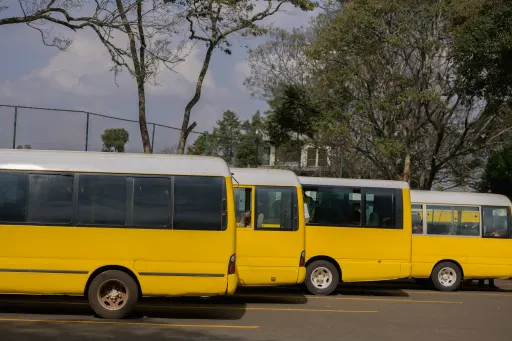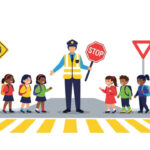School transport safety in Kenya has become a pressing concern as the number of students relying on school buses and vans continues to rise. With frequent reports of road accidents involving school vehicles, the National Transport and Safety Authority (NTSA) has introduced stringent regulations to safeguard schoolchildren. The Draft Traffic (School Transport) Rules 2025 outlines the obligations of school transport providers, emphasizing vehicle safety, qualified personnel, and robust operational policies. This article delves into these obligations, providing a comprehensive guide for schools, parents, and transport providers to ensure compliance and prioritize student safety. By understanding these regulations, stakeholders can contribute to safer roads and protect Kenya’s young learners.
The Legal Framework: Draft Traffic (School Transport) Rules 2025
The Draft Traffic (School Transport) Rules 2025, introduced by the NTSA, aims to align Kenya’s school transport system with East African Community (EAC) standards and global best practices. These rules establish a comprehensive framework for safe, professional, and regulated transportation of schoolchildren. Key objectives include:
- Establishing a licensing framework for school transport providers and vehicles.
- Defining qualification standards for drivers and attendants.
- Enforcing minimum safety standards for school vehicles.
- Promoting accountability through mandatory reporting and complaint resolution mechanisms.
These regulations address critical gaps in the school transport sector, ensuring that providers prioritize safety over profit. Below, we explore the specific obligations outlined in the rules, their implications, and how they contribute to safer school transport in Kenya.
Core Obligations of School Transport Providers
School transport providers in Kenya, whether operating for public or private institutions, must adhere to strict guidelines to ensure student safety. The NTSA’s regulations outline several key responsibilities, which we break down below.
1. Mandatory Third-Party Insurance Cover
Every school vehicle must have a valid third-party insurance cover to operate legally. This requirement ensures that in the event of an accident, victims—whether students, pedestrians, or other road users—are financially protected. Third-party insurance covers damages or injuries caused to others by the insured vehicle, providing a critical safety net.
- Why It Matters: Without adequate insurance, schools and transport providers risk significant financial liabilities in case of accidents. This mandate protects students and their families while ensuring compliance with Kenya’s road safety laws.
- Practical Steps: Providers must verify insurance validity regularly and maintain documentation for NTSA inspections.
2. Employment of Qualified Drivers and Attendants
The NTSA mandates that school transport providers employ only qualified drivers and vehicle attendants. This ensures that personnel handling schoolchildren are competent and trustworthy.
- Driver Qualifications:
- Must hold a valid NTSA license for the specific vehicle category.
- Undergo annual criminal record assessments to screen for child abuse convictions or driving under the influence.
- Complete annual medical tests to confirm physical and mental fitness.
- Attendant Qualifications:
- Must possess a valid Public Service Vehicle (PSV) conductor license issued by NTSA.
- Undergo annual criminal record checks to ensure no history of child abuse or violent behavior.
- Impact: Qualified personnel reduce the risk of reckless driving and ensure proper supervision of students during transit.
Providers must use tools like the NTSA driving license check system to verify compliance and maintain records of employee qualifications.
3. Vehicle Maintenance and Record-Keeping
School transport providers are required to ensure that vehicles are regularly maintained and serviced, with records kept for at least two years. This obligation addresses the common issue of unroadworthy vehicles contributing to accidents.
- Maintenance Requirements:
- Vehicles must undergo bi-annual inspections to meet NTSA safety standards.
- Common issues flagged include defective seat belts, worn-out upholstery, faulty suspension, and expired speed limiters.
- Record-Keeping:
- Providers must document all maintenance and service activities, including dates, parts replaced, and service providers.
- Records must be available for NTSA compliance checks.
- Why It’s Critical: Regular maintenance prevents mechanical failures that could lead to accidents. For example, the NTSA flagged 315,000 public service vehicles operating without valid inspection certificates, highlighting the scale of the issue.
4. Complaints Phone and Resolution Mechanism
To promote accountability, school transport providers must operate a complaints phone line and ensure timely resolution of all complaints. Vehicles must display a contact number with the phrase “IN CASE VEHICLE BEING DRIVEN RECKLESSLY CALL” to encourage public reporting.
- Implementation:
- The complaints number must be visible on the vehicle’s exterior.
- Providers must establish a system to log, investigate, and resolve complaints promptly.
- Benefits: This mechanism empowers parents, students, and other road users to report unsafe practices, fostering transparency and trust.
5. School Transport Operations Policy
Providers must develop and adopt a comprehensive school transport operations policy that covers several critical areas:
- Transport Operations, Fleet Management, and Logistics:
- Ensure efficient scheduling and route planning to minimize delays and risks.
- Maintain a fleet that complies with NTSA standards, including yellow paint (color code FFD800) and specific signage.
- Driver Recruitment, Supervision, and Training:
- Implement rigorous hiring processes to select qualified drivers.
- Provide ongoing training on road safety and child welfare.
- Road Safety Awareness and Training:
- Conduct regular safety workshops for drivers, attendants, and students.
- Educate students on safe boarding and disembarking practices.
- Driving Time Limits:
- Ensure no driver operates a school vehicle for more than eight hours in a 24-hour period to prevent fatigue-related accidents.
- Route Mapping:
- Develop and regularly update transport routes to avoid high-risk areas and optimize travel time.
- Emergency Response Plan:
- Outline procedures for evacuation, medical emergencies, and communication with parents and school authorities during incidents.
This policy ensures that providers have a structured approach to managing their operations, prioritizing student safety at every stage.
6. Accident Reporting Requirements
In the event of an accident resulting in a fatality, providers must submit a school vehicle accident report to the NTSA within 24 hours. The report must include:
- A brief description of the accident.
- A passenger manifest with full names and identification numbers (if applicable).
- Driver details, including license information.
- Insurance particulars of the vehicle.
This requirement ensures transparency and enables the NTSA to investigate accidents thoroughly, identifying causes and preventing future incidents.
Vehicle Safety Regulations: Enhancing Protection for Students
Beyond the obligations of providers, the Draft Traffic (School Transport) Rules 2025 introduces specific safety requirements for school vehicles to minimize risks.
Signage and Visibility
School vehicles must be clearly identifiable to other road users to prevent accidents during pick-up and drop-off.
- Mandatory Signage:
- Display “SCHOOL BUS” on the front and rear.
- Include “DO NOT PASS WHEN RED LIGHTS ARE FLASHING” in black block letters (at least eight inches high) at the rear.
- Stop Signal Arm:
- Vehicles must have a retractable stop signal arm activated at least 30 meters before stopping to pick up or drop off students.
- For vehicles longer than 30 feet, stop signal arms must be installed on both front and rear right-hand sides.
- Red Light Indicators:
- Dual red-light indicators must flash when the vehicle stops to alert other motorists.
These features ensure that school buses are easily recognizable, reducing the likelihood of collisions.
Safety Equipment and Design
School vehicles must meet strict safety and design standards to protect passengers.
- Safety Belts:
- All seats must be fitted with functional safety belts designed for children.
- Fire Extinguishers:
- At least one accessible fire extinguisher, compliant with Kenya Bureau of Standards (KEBS), must be onboard.
- Telematics System:
- Vehicles must be equipped with a KEBS-approved vehicular telematics system for tracking and monitoring.
- Seat Design:
- Seats must be fixed, upholstered with fire-resistant materials, and free from sharp edges to prevent injuries during collisions.
- Mirrors and Visibility:
- Vehicles must have mirrors providing adequate visibility of the sides and rear.
Operational Restrictions
To further enhance safety, the NTSA imposes operational limits on school vehicles.
- Operating Hours:
- School vehicles may only operate between 5 a.m. and 10 p.m., reducing risks associated with nighttime driving.
- Speed Limits:
- The maximum speed for school vehicles is 80 km/h to minimize the risk of high-speed accidents.
- Passenger Limits:
- Each student must have an allocated seat, and overloading is strictly prohibited.
The Role of Drivers and Attendants in School Transport Safety
Drivers and attendants play a pivotal role in ensuring the safety of schoolchildren. The NTSA’s regulations outline specific responsibilities to enhance accountability.
Responsibilities of Drivers
The Draft Traffic (School Transport) Rules 2025 lists eight key roles for school transport drivers:
- Ensure the health, safety, and welfare of every child onboard.
- Operate the vehicle efficiently and safely at all times.
- Conduct thorough pre-trip and post-trip checks to confirm vehicle functionality.
- Ensure no child is left behind when the vehicle reaches its destination.
- Maintain vehicle cleanliness and security.
- Ensure children safely disembark and move to a safe distance.
- Activate the stop signal arm and red-light indicators at least 30 meters before stopping.
- Adhere to all traffic rules and NTSA guidelines.
Responsibilities of Attendants
School vehicle attendants are equally critical in maintaining safety. Their duties include:
- Assisting with safe boarding and disembarking of students.
- Ensuring students are properly secured with safety belts.
- Maintaining discipline and safety onboard.
- Supporting the driver during emergencies.
These roles underscore the importance of teamwork between drivers and attendants to create a safe transport environment.
Public Participation and Feedback
The NTSA has actively sought public input on the Draft Traffic (School Transport) Rules 2025 through forums held across counties like Nairobi, Mombasa, Kisumu, and Garissa. Stakeholders, including parents, school administrators, and transport providers, have proposed additional measures, such as:
- Standardizing school bus designs to ensure child-friendly features.
- Reinforcing bus construction for added durability.
- Enhancing training programs for drivers and attendants.
This collaborative approach ensures that the final regulations reflect the needs and concerns of all stakeholders, fostering a safer transport system for Kenyan students.
Challenges and Opportunities
While the NTSA’s regulations are a significant step forward, implementing them poses challenges for school transport providers.
Challenges
- Cost of Compliance:
- Upgrading vehicles to meet safety standards, such as installing telematics systems and safety belts, can be expensive.
- Smaller schools or providers may struggle to afford these upgrades.
- Training and Recruitment:
- Finding qualified drivers and attendants who meet NTSA’s stringent requirements can be difficult, especially in rural areas.
- Public Awareness:
- Many schools and parents are unaware of the new regulations, leading to potential non-compliance.
Opportunities
- Improved Safety:
- Compliance with these regulations will reduce accidents and enhance public confidence in school transport.
- Technological Advancements:
- Telematics systems enable real-time monitoring, improving fleet management and accountability.
- Stakeholder Collaboration:
- Public participation forums provide an opportunity to refine regulations and address practical concerns.
The Draft Traffic (School Transport) Rules 2025 represents a landmark effort to improve school transport safety in Kenya. By mandating third-party insurance, qualified personnel, regular maintenance, complaint resolution, operational policies, and accident reporting, the NTSA is addressing critical gaps in the system. These obligations, combined with strict vehicle safety standards, aim to protect schoolchildren and ensure safer roads for all Kenyans.
School transport providers, schools, and parents must work together to implement these regulations effectively. By prioritizing compliance and fostering a culture of road safety, Kenya can set a regional benchmark for school transport operations. For more information on these regulations, visit the NTSA website at www.ntsa.go.ke or contact their official channels. Together, we can ensure that every child travels to and from school safely.





